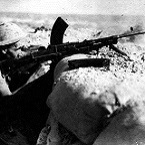HardLuckYetAgain
Posts: 6987
Joined: 2/5/2016
Status: offline

|
quote:
ORIGINAL: loki100
quote:
ORIGINAL: HardLuckYetAgain
Thank you everyone for your posts and invaluable insight into the Freight system and the posts in my AAR. I hope some questions have been answered for some.
this explanation as to how the system works is in the manual - 30.8.1 including a discussion of how freight takes 'trains' and then moves
quote:
ORIGINAL: EwaldvonKleist
Beethoven1, Loki, thanks for your ruleset contributions regarding the 200SMP. The fact that the entrained freight always takes a "200SMP" budget with it, regardless of the distance it travels, does change things as you describe. Not sure why the system is this way, a unit shipped from Berlin 10 Miles to Potsdam should use less train capacity than one shipped to Rostov in real life, but does not ingame if I understand this correctly?
@Beethoven: The test by Hardradi is not what I described since the rail net is connected to the mainland and is not a single rail line only connected to a port.
From what I have learned now, the test is moot anyway.
Regrads
a) like a unit freight matches its 'weight' to claim rail cap (or shipping or air transport), just 1 tonne of freight = 1 unit of capacity
b) there are complications (above what is said above) but they don't alter the basic system
c) A unit grabs the trains as it entrains, generates a SMP stock (MP left after moves and entrains) and moves, sometimes you can disentrain that move (so the trains go back to source), most often the unit has to wait till next turn to finish its move (so the trains are locked up).
c1) you can test this 'locking up' by entraining say XXXX Pzr when it arrives at Berlin, the rail cap left at Berlin will be reduced till they finally leave their trains
c2) in a unit move you have your 200 SMP (or less), each hex costs from 1-6 SMP (congestion), when you reach the end of your allocation it stops
d) freight does some things the same, some different
d1) entrains, gets 200 SMP pays a variable move cost
d2) must disentrain (which is where intermediate depots come in)
d3) can still try to go 200 hexes but pulls down more rail cap from the original source, so whereas increasing congestion reduces the distance for units it actually increases the cost on rail cap for freight
d4) which is why the amount pumped out of the NSS has a max (the rail yards) but the practical amount (sticking with the axis for the moment) drops as distance/prior usage builds up. Its also why it tends to plateau for the axis player come mid-42 when they basically have all the main rail connections repaired (so the ability to route around congestion) and the at-start malus drops away
Its easier to test the isolated spur question in WiTW as geography generates them. The first (& usually most telling) is that when the Allies move into Italy the rail cap for Sicily is not available, so its not till they have some of the bigger rail yards in S Italy captured, repaired and integrated will they get much rail capacity. Same in France, its slotting Paris into the rail net that starts to give some capacity (all those trains in the UK being useless)
quote:
ORIGINAL: HardLuckYetAgain
... "pretty misleading to be honest" is offensive and you seem to do it quit often to not only me ...
your post was misleading, as was the underlying premise. If all you were doing was a discussion of a different way to do depot priorities/HQ placement etc then your take is a valid as anyone elses. May be more or less effective but never right or wrong. When you (inadvertently) misrepresent how it works, and then others shoot off accepting what you've said then, yes, its misleading.
edit - and, of real importance, none of this engages with how demand slots into the system
Yup, 30.8.1 in the Appendix is a good read on how freight works. Thank you for the pointer. I will point people to this.
Yup, my premise was wrong based on my understanding of observance of the system. I said so in my AAR I could be totally wrong from my observation. At this point I believe more have learned from the dialogue and maybe a better understanding since many, like me, don't read the manual from cover to cover.
Thanks for the lesson.
|
 Printable Version
Printable Version










 New Messages
New Messages No New Messages
No New Messages Hot Topic w/ New Messages
Hot Topic w/ New Messages Hot Topic w/o New Messages
Hot Topic w/o New Messages Locked w/ New Messages
Locked w/ New Messages Locked w/o New Messages
Locked w/o New Messages Post New Thread
Post New Thread